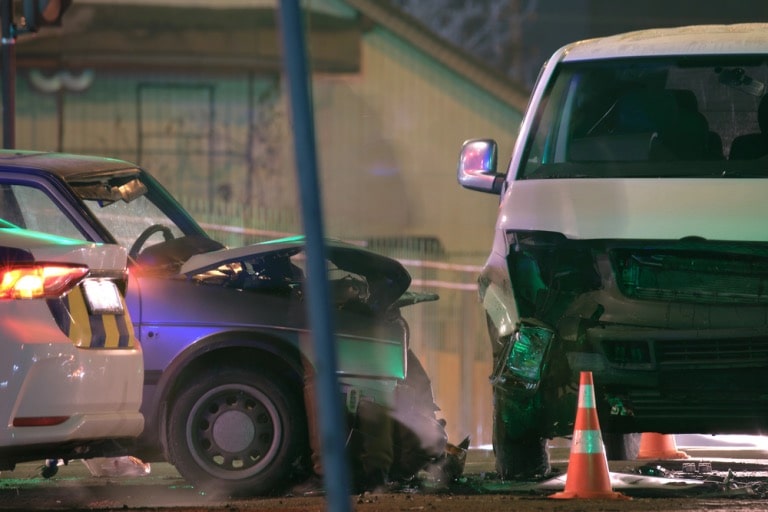Common Causes of Multi-Vehicle Accidents and How Fault is Determined

Multi-vehicle accidents are complex events that often have multiple factors contributing to their occurrence. By understanding the common causes of these accidents, you can help to prevent them but also you can learn how fault is determined in these types of collisions.
Considering that some states have rules such as a 50% bar on recovery under modified comparative fault, this knowledge can help you protect yourself financially while also helping you to make safer choices on the road. Ensure all those responsible for an accident are held accountable with the following crucial information.
Rear-end Collisions
One of the most common types of multi-vehicle accidents is a rear-end collision case. This happens when you are driving and get hit from the back, with the sudden impact leading to additional cars piling up behind you. Being the front car in this situation can be extremely dangerous, which is why learning the common causes of these accidents is important:
- Tailgating: Following too closely behind the vehicle in front is a significant risk factor, as when the lead vehicle suddenly brakes, the following vehicle may not have enough time or distance to stop safely, thus resulting in a rear-end collision.
- Distracted Driving: Texting, using a phone, eating, or applying makeup while driving can divert a driver’s attention from the road, with this distraction impairing their reaction time, thereby increasing the risk of rear-ending another vehicle.
- Sudden Braking: Unexpected braking, such as to avoid a hazard or a pedestrian, can lead to chain-reaction rear-end collisions, especially in heavy traffic.
Of the many common causes of multi-vehicle accidents, rear-end collisions are perhaps the most challenging to avoid as they are often caused by other drivers.
Head-on Collisions
The second common cause of multi-vehicle accidents on the road is head-on collisions. These also tend to cause the most injuries or fatalities given higher speeds between the cars that collide. The impact tends to send cars scattering which inadvertently results in additional accidents. The common causes of head-on collisions include:
- Impaired Driving: Driving under the influence of alcohol or drugs significantly impairs judgment, coordination, and reaction time, thereby increasing the risk of head-on collisions.
- Lane Departures: Drivers who drift into oncoming traffic due to fatigue, distraction, or aggressive driving significantly increase the risk of a head-on collision.
- Passing in No-Passing Zones: Attempting to pass another vehicle in areas where it is prohibited, such as on blind curves or hills, can lead to head-on collisions with oncoming traffic.
Should you witness a head-on collision in front of you, do your best to drive defensively and avoid getting caught in the aftermath. However, do your best to avoid panicking as this may lead you to make a sudden move on the road that causes another collision.
Intersection Accidents
The third common cause of multi-vehicle accidents on the road is intersection accidents. These are notorious for accidents due to the convergence of multiple traffic flows in one chokepoint. The common causes of accidents at intersections include:
- Running Red Lights: Running a red light is a major cause of T-bone collisions and other serious intersection accidents that can lead to devastating injuries.
- Failure to Yield: Failing to yield the right-of-way at intersections, such as at stop signs or when turning, is a frequent cause of collisions, so you must be aware of other vehicles and pedestrians and yield appropriately.
- Distracted Driving: Distracted driving at intersections, such as texting or looking at a GPS, can lead to drivers missing traffic signals, failing to yield, or making incorrect turns, thus increasing the risk of accidents.
Of all the causes of multi-vehicle accidents, intersection accidents are arguably the easiest to avoid. By staying vigilant and watching the actions of other drivers at intersections, you can keep yourself protected.
Sideswipe Accidents
The final common cause of multi-vehicle accidents is sideswipe accidents. These occur when two drivers traveling in the same direction collide at the sides. Given how suddenly they occur, sideswipe accidents often come with a great deal of confusion over what happened. The most common causes of these accidents include:
- Improper Lane Changes: Failing to check blind spots, changing lanes too abruptly, or merging into traffic without yielding can lead to sideswipe accidents.
- Passing on the Shoulder: Passing on the shoulder of the road is illegal and extremely dangerous as it increases the risk of sideswipe collisions with other vehicles and can also lead to collisions with pedestrians or roadside objects.
- Road Rage Incidents: Aggressive driving behaviors, such as tailgating, speeding, and erratic lane changes, can escalate into road rage incidents, which can lead to intentional or unintentional sideswipe collisions.
How is Fault Determined?
Determining fault in a multi-vehicle accident is always more complicated than determining fault in single or dual-car collisions. The main factors that will be taken into account will include witness testimony from other drivers, passengers, or bystanders who can perhaps attest to which driver caused the accident initially. Police reports written up by responding officers, and any physical evidence such as skid marks, vehicle damage, and debris.
All of this information will be used to assign fault percentages to the drivers involved, which will impact the compensation you are capable of receiving through insurance or a legal battle. As mentioned, if you are in a state that restricts your ability to receive compensation if you are more than 50% at fault, then this analysis becomes all the more important which is why hiring an effective lawyer is so important.
Stay Safe from Multi-vehicle Accidents on the Road
By understanding the common causes of multi-vehicle accidents on the road, you can take the first step in helping to prevent them. By driving defensively, staying aware of your surroundings, and obeying all traffic laws, you can significantly reduce your risk of being involved in an accident.
Should you find yourself involved in a multi-car collision, gather as much information as possible, document the accident scene, and consult with an attorney who can help you understand your legal rights and options.





